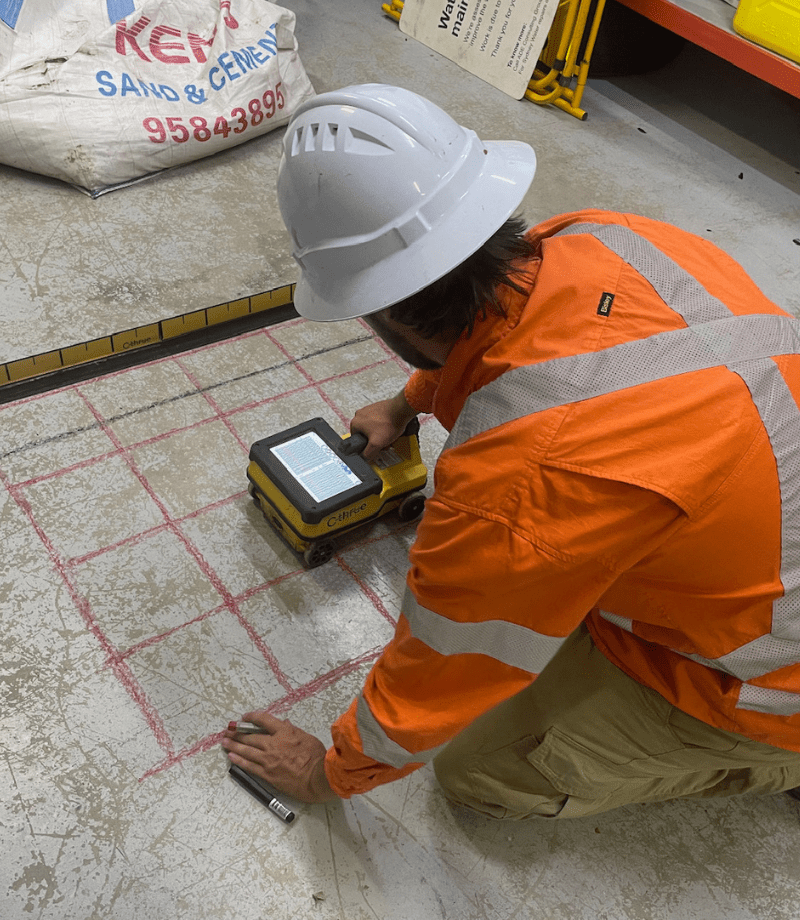Choosing the Right Concrete Scanning Devices
Choosing the Right Concrete Scanning Devices
Blog Article
Introduce the Transformative Power of Concrete Scanning in Making Best Use Of Effectiveness and Safety And Security
Concrete scanning has actually arised as a critical tool in the building market, supplying unequaled advantages in enhancing job efficiency and ensuring safety requirements. By using sophisticated technology, concrete scanning enables specialists to see beyond the surface area, uncovering hidden complexities that can affect the architectural honesty of a structure. The transformative power of concrete scanning depends on its capability to give real-time data and thorough insights, transforming just how projects are prepared and performed. As we look into the ins and outs of this cutting-edge technique, a globe of possibilities opens, showcasing a brand-new age of construction methods that focus on precision and safety.
Relevance of Concrete Scanning
Ensuring the architectural integrity and safety and security of building jobs begins with the essential action of conducting thorough concrete scanning. Concrete scanning is a non-destructive technique used to find and map subsurface aspects within concrete frameworks.
The significance of concrete scanning can not be overstated, as it plays a vital role in protecting against mishaps, decreasing project hold-ups, and ensuring the long-lasting durability of the building. By identifying possible hazards before the building stage begins, builders can execute ideal safety steps and make educated choices regarding the design and execution of the task. Furthermore, concrete scanning aids in enhancing job timelines and spending plan by staying clear of unforeseen expenses and hold-ups that might emerge as a result of unanticipated blockages within the concrete. Ultimately, investing in thorough concrete scanning is a proactive technique that boosts both efficiency and safety in construction jobs.
Just How Concrete Scanning Functions
Concrete scanning operates as a vital tool in construction projects by utilizing advanced innovations to find and map subsurface aspects without causing architectural damages. Ground Permeating Radar (GPR) and Electromagnetic Induction (EMI) are two key techniques used in concrete scanning.
Throughout the scanning procedure, the data collected is assessed in real-time, allowing instant recognition of prospective risks or obstacles below the surface area. This info help in decision-making, guaranteeing that construction tasks proceed safely and successfully. Additionally, 3D imaging software application can be made use of to produce topographic maps of the subsurface aspects, better improving project planning and implementation. By using these innovative innovations, concrete scanning significantly minimizes the threat of pricey problems and injuries on construction sites.
Advantages of Concrete Scanning
One of the primary advantages of concrete scanning is the ability to spot and situate ingrained things such as rebar, post-tension cable televisions, and conduits properly. Concrete scanning helps in preparation and creating a lot more efficiently, as it gives exact information about the place and depth of structural parts.

Study: Concrete Scanning Success

In another situation, a building and construction company utilized 3D concrete scanning to analyze the condition of maturing concrete frameworks in a historical building. The detailed scans supplied beneficial insights into the degree of damage and helped prioritize upkeep initiatives effectively. By proactively attending to locations of worry identified through scanning, the business had the ability to expand the lifespan of the framework and ensure resident security.
These instance researches emphasize the transformative power of concrete see here now scanning in enhancing performance, accuracy, and safety in construction jobs.
Carrying Out Concrete Scanning in Projects
Carrying out innovative scanning technologies during construction projects has become increasingly essential for enhancing precision and safety. By integrating concrete scanning right into task preparation and implementation, building groups can determine prospective dangers, such as rebar or post-tension cable televisions, hidden within concrete structures. This positive technique lessens the danger of accidents, delays, and costly rework, ultimately leading to more reliable task timelines and spending plans.
To carry out concrete scanning successfully, project managers need to collaborate very closely with knowledgeable scanning experts to identify the most suitable scanning techniques for the specific task demands. Engaging scanning specialists from the early phases of a job enables the group to create comprehensive scanning strategies that attend to crucial areas of concern and make certain detailed information collection.
Furthermore, including concrete scanning right into regular task process can streamline decision-making procedures, as real-time check information supplies prompt insights into the problem of concrete frameworks - Concrete Scanning. This data-driven strategy assists in informed analytical and enables teams to make modifications immediately, fostering a culture of performance and safety throughout the task lifecycle

Conclusion
To conclude, concrete scanning plays an essential function in boosting efficiency and safety and security in building jobs. By utilizing sophisticated technology to map and identify out underlying structures within concrete, this process aids to avoid pricey errors, make sure architectural honesty, and minimize risks on site. With the ability to reveal hidden elements and offer accurate information, concrete scanning verifies to be a beneficial device for optimizing project outcomes and optimizing total success.
Concrete scanning is a non-destructive approach made use of to identify and map subsurface components within concrete frameworks. Additionally, concrete scanning assists in enhancing job timelines and budget plan by preventing unforeseen expenses and hold-ups that might develop due to unpredicted advice blockages within the concrete. One remarkable instance research study entails a large renovation task where concrete scanning played an essential role in guaranteeing project success.In one more situation, a building company made use of 3D concrete scanning to analyze the problem of maturing concrete frameworks in a historic building. By incorporating concrete scanning right into job planning and implementation, construction groups can recognize possible risks, such as rebar or post-tension cables, hidden within concrete frameworks.
Report this page